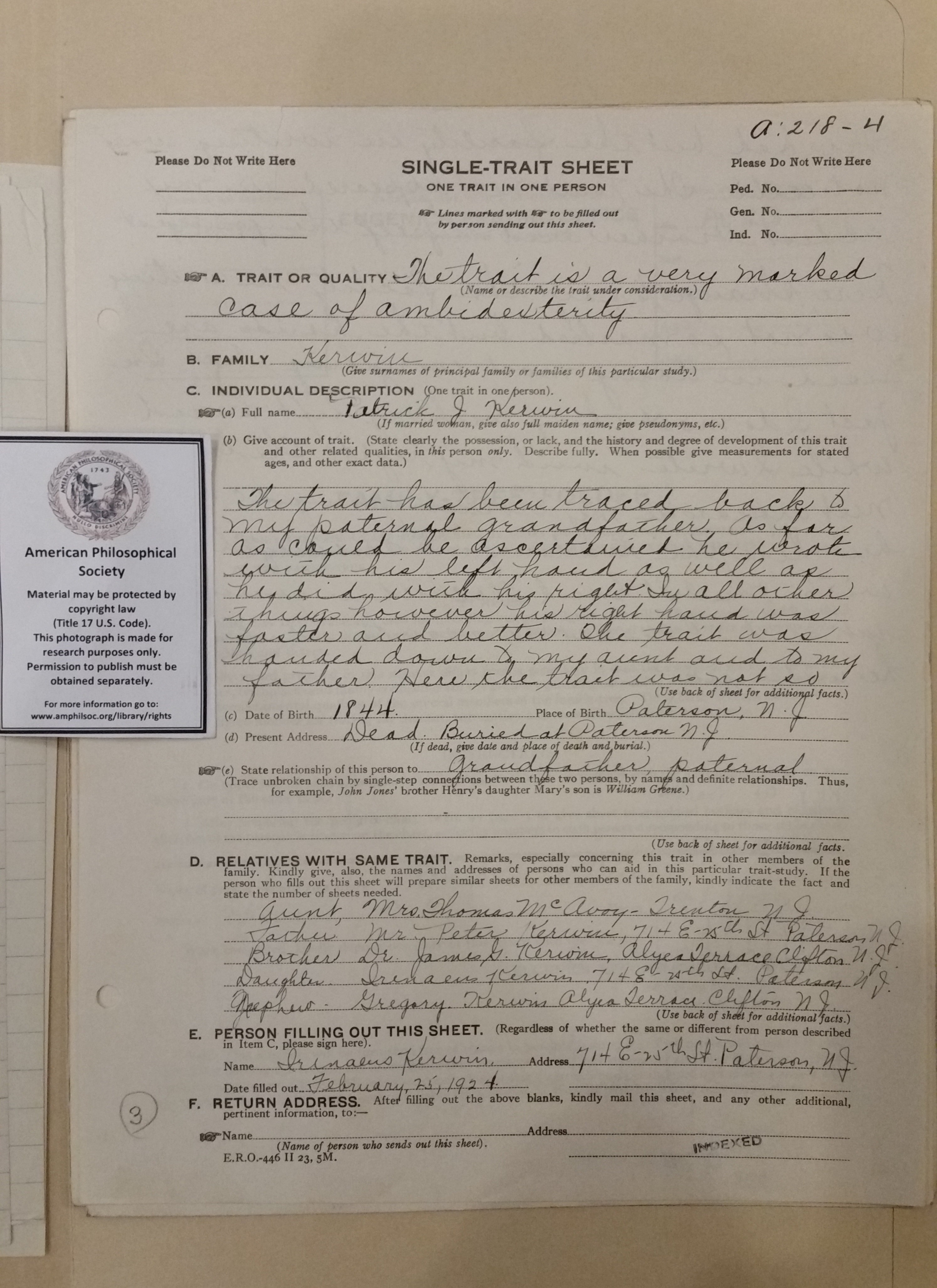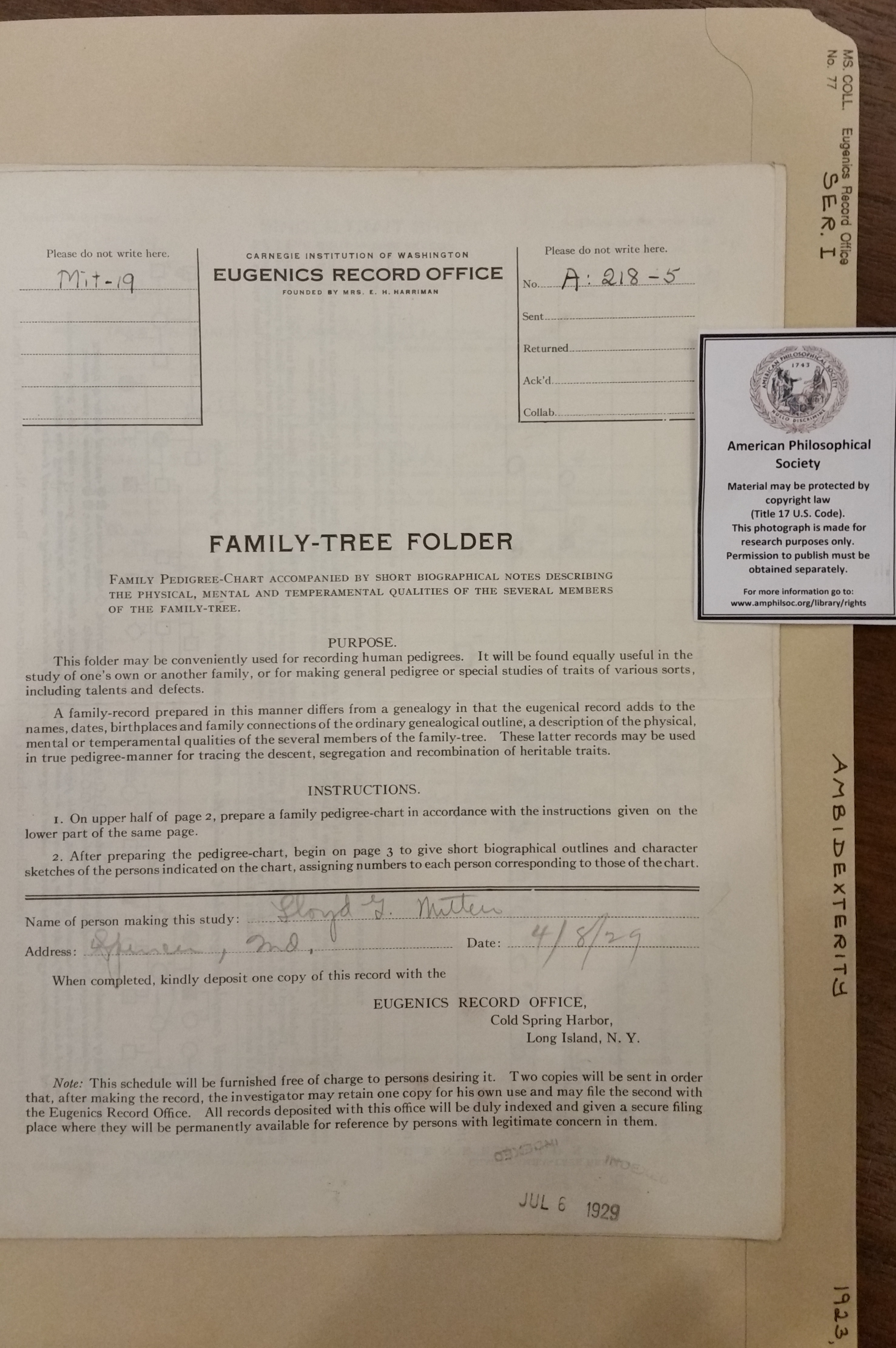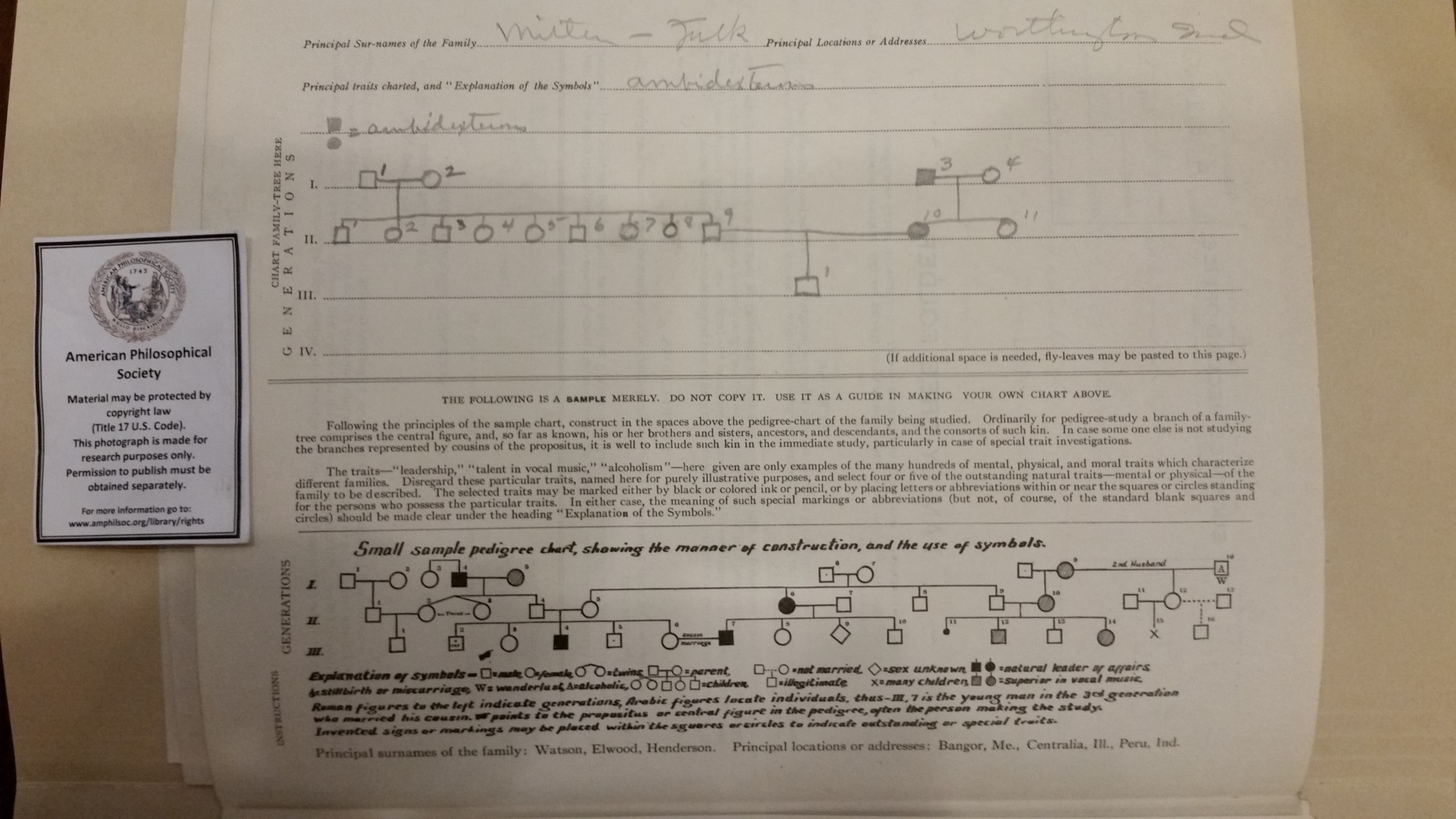Ambidexterity is left-handedness
This is what a researcher at the Eugenics Record Office (ERO) concluded after analyzing the handedness of 1,305 children stemming from 340 different “matings” (that is, pairs of parents). Ambidexterity posed a problem to geneticists in the early 20th century. If all observed individuals had been either right- or left-handed, handedness could have been analyzed according to classic Mendelian principles. But ambidexters existed. Consequently, handedness might not be a binary trait, and it might be impossible to explain the inheritance of handedness with Mendel’s theory of dominant and recessive alleles.
Determined to map the inheritance of handedness with Mendelian methods nonetheless, the researcher considered five different possibilities:
-
“Right-handedness is dominant. Ambidexterity is right-handedness.”
-
“Right-handedness is dominant. Ambidexterity is left-handedness.”
-
“Left-handedness is dominant. Ambidexterity is right-handedness.”
-
“Left-handedness is dominant. Ambidexterity is left-handedness.”
-
“Right-handedness is dominant. Ambidexterity is a median trait.”
A little bit of math was necessary to single out the most appropriate of these hypotheses.
First, the researcher counted the ambidextrous, left-handed, and right-handed children for each of the following “mating” types: two right-handed parents, two left-handed parents, or one left- and one right-handed parent. (Note that parents were not classified as ambidextrous, while some of the children were.)
Second, to test hypotheses I and III, the researcher added up the numbers of ambidextrous and right-handed children. To test hypotheses II and IV, they added up the numbers of ambidextrous and left-handed children. Only hypothesis V considered ambidextrous children as an individual category.
Third, the researcher calculated the expected percentages of handedness types in the offspring. These calculations followed the Mendelian principles of dominant and recessive alleles. The expected ratios of left-handed, right-handed, and ambidextrous children had to be calculated individually for each of the three “mating” types (that is, combinations of parental handedness).
Fourth, the researcher compared the expected ratios with the observed distributions of handedness types across the 1,305 children and 340 “matings.” The actual numbers matched most closely the expected ratios for hypothesis II: “Right-handedness is dominant. Ambidexterity is left-handedness.”
Sounds like a lot of work? It was. But there was also a lot to gain.
The ERO owned a reprint of “The Inheritance of Left-Handedness.” In this 1911 paper, Pennsylvania-born anatomist Harvey E. Jordan (1875–1963) argued that the inheritance of handedness holds the key to the inheritance of virtually all human qualities. If researchers were able to figure out how handedness is passed on, they would soon be able to unravel the inheritance of “subtle characteristics [such] as virtue, justice, temperance, integrity, thrift, sagacity, etc.—characteristics of prime significance for the future trend of human history” (p. 123).
If this prospect does not justify a lot of effort, what else would?
With their hopes up sky-high, the ERO had systematically charted the prevalence of left-handedness, right-handedness, and ambidexterity in the 1910s and 1920s. ERO affiliates had collected data from 340 couples and their families. They had recorded the data on standardized “Single-Trait Sheet[s]” and in “Family-Tree Folder[s].”
Not much came of this. The ERO’s mathematical data analysis culminated in the verdict that “[a]mbidexterity is left-handedness.” It is doubtful whether the ambidextrous collaborators, who had provided detailed trait descriptions and family trees, felt that the ERO had done them justice. But if there were any letters of complaint, the ERO did not file them with their handedness data. Only the datasets and the calculations have been preserved.


Each folder contained a family trees, short summaries of individual cases of ambidexterity in a family, and a more detailed Single-Trait Sheet for each ambidextrous family member.

Those interested in the Eugenic Record Office’s research on ambidexterity may access folders A: 217 #1 Sinisterity and A: 218 Ambidexterity, 1923, 1929 in the Eugenics Record Office Records.
